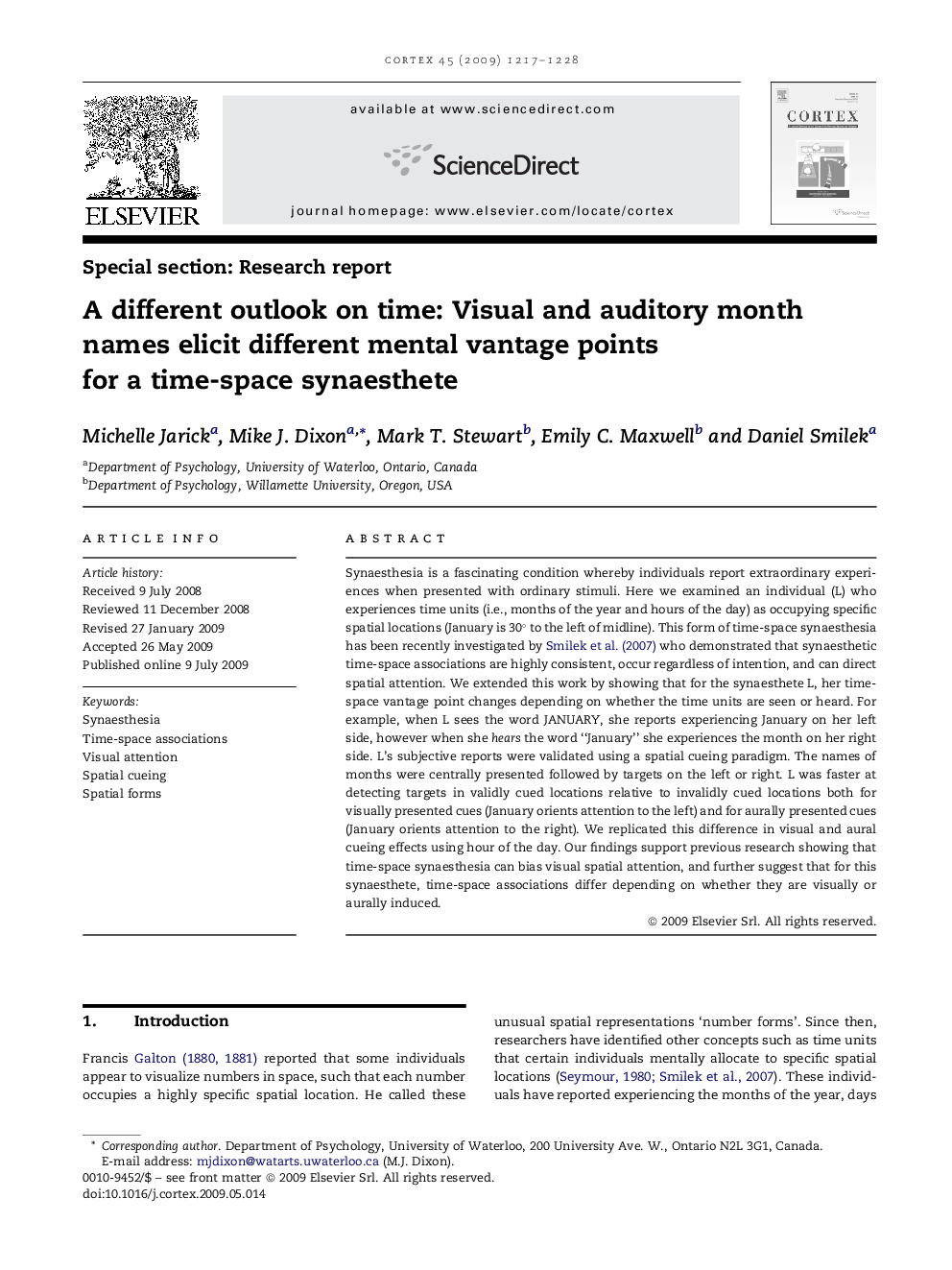| Article ID | Journal | Published Year | Pages | File Type |
|---|---|---|---|---|
| 942771 | Cortex | 2009 | 12 Pages |
Synaesthesia is a fascinating condition whereby individuals report extraordinary experiences when presented with ordinary stimuli. Here we examined an individual (L) who experiences time units (i.e., months of the year and hours of the day) as occupying specific spatial locations (January is 30° to the left of midline). This form of time-space synaesthesia has been recently investigated by Smilek et al. (2007) who demonstrated that synaesthetic time-space associations are highly consistent, occur regardless of intention, and can direct spatial attention. We extended this work by showing that for the synaesthete L, her time-space vantage point changes depending on whether the time units are seen or heard. For example, when L sees the word JANUARY, she reports experiencing January on her left side, however when she hears the word “January” she experiences the month on her right side. L's subjective reports were validated using a spatial cueing paradigm. The names of months were centrally presented followed by targets on the left or right. L was faster at detecting targets in validly cued locations relative to invalidly cued locations both for visually presented cues (January orients attention to the left) and for aurally presented cues (January orients attention to the right). We replicated this difference in visual and aural cueing effects using hour of the day. Our findings support previous research showing that time-space synaesthesia can bias visual spatial attention, and further suggest that for this synaesthete, time-space associations differ depending on whether they are visually or aurally induced.
